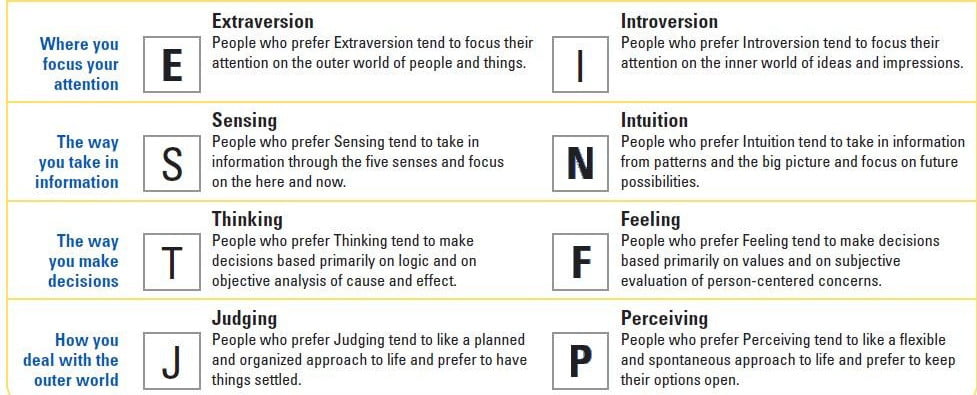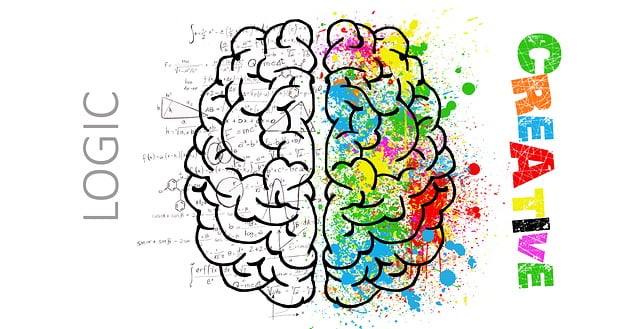Imagine having your own team, you give them a project to work on and expect a reasonable enough quality and speed in the process of completing it. Two of your team members, let’s call them John and Sarah, are the ones who are driving the whole project, they have the vision and the means to incorporate it into the work practice and they have to work with each other to create the best possible outcome. They both have the technical and soft skills to do it except those are not the only prerequisite which will guarantee the project going smoothly. No, no, John and Sarah have a major communication problem and they don’t agree on a lot of each other’s decisions. Not to say that either of their decisions is wrong, it’s just that they don’t match in terms of personality. How so? John is more of a people person, he enjoys taking the lead on the team and he’s very direct in stating his opinions as opposed to Sarah who is more the introverted type with a little too much attention to detail and doesn’t like being bossed around. They are one of the best employees individually but when you pair them next to each other and expect a good teamwork, oftentimes it won’t work. This is why personalities are important as well, either when you’re prospecting for a new employee or in workplace in general. How do we best go about finding this out on each employee individually?
This is where MBTI comes in. But first, what is it by definition? It stands for Myers-Briggs Type Indicator and defines as a self-report questionnaire which shows how a person views the world in psychological terms of making decisions, perceiving different people or just general type of personality. It helps us to categorize people into 16 different profiles each with their own general train of thought and unique personality.
I should note that this type of questionnaire and profiling is considered pseudoscience and it doesn’t have any real substance when it comes to true scientific studies which isn’t to say that it isn’t useful in deciphering people’s way of thinking and categorizing them in the way that it helps with your business agenda.

MBTI deconstructed
Let’s try and understand the basics of how the profiles work. The 16 profiles I mentioned above are described in 4 different letters which have some sort of meaning. For example, INFP or ESTJ as shown below:

Each letter represents a relationship between 4 dichotomies which follows as:
- Extroversion / Introversion – represents how a person expresses their energy, internally or externally
- Sensing / Intuition – represents which type of information a person believes in, external information or internal/imaginative
- Thinking / Feeling – represents how a person deciphers that information, using logic or acting on emotion
- Judging / Perceiving – represents how a person puts the processed information in action, by planning or being indifferent by scheduling and exploring alternatives
The two types in question mean Introverted, iNtuitive, Feeling, Perceiving (INFP) and Extroverted, Sensing, Thinking, Judging (ESTJ).
Each type has ultimately their own description, although there are traits which can be shared amongst all types. INFP, for example, is seen as a type who is usually overly shy and very kind to people. Their self-confidence isn’t a strong suit but they’re very altruistic and they will gladly help any person they care for. On the flip side, ESTJ is the executive type who sees the world more through logic than anything else. They’re oftentimes seen as ruthless in their thought for others and are very business-oriented. As you can see, two very different personalities, as indicated by their letter dichotomies as well. Remember John and Sara? They were two different types as well. Now imagine these two working together in a team. That project’s future doesn’t look too bright all of a sudden, right?
All the types are as follows:

We will not go into detail about each and every type in this article, the main premise is clear (although I might go about different types in different articles). Now that we have the basic knowledge about MBTI, how do we recognize types without them doing any questionnaire beforehand?
How to recognize an MBTI type
Learning the theory is one thing but in practice it’s completely different. Typing a person isn’t easy because there are many factors which decide one’s dichotomy. You can type each of the dichotomies well if you’re paying attention to their dominant functions (for example Si which stands for introverted sensing is different than Se which stands for extroverted sensing) but it is tricky. It opens up a lot more space for questions, albeit unnecessary if you’re not absolute in your 100% correct typing. There are tutorials on how to do it completely without missing too many details but I found them to be overly complicated in terms of having to pay attention to it while talking to someone. I summarized couple of rules that I use on my own when trying to type someone without paying attention to their dominant functions:
Extroverted or introverted – this one is quite simple, you can recognize them by how they act, their demeanor and the tone of their voice. They either prefer a group of people from where they can draw energy or being by themselves and draw the energy from the inside. The most basic question for this is: Would you rather go out on a Saturday night with your friends or stay home and read a book?
Sensing or Intuitive – Sensing types rely on the information that comes from the outside world. Anything that is said or done is considered as fact and they’re occupied with present events. INtuitive types on the other hand rely more on their inner thoughts and insight. They’re very future-oriented. The most basic question I like to ask is: If you learn a process for a task on your job, do you continue doing it exactly the way you learned or you find your own way?
Thinking or Feeling – this one is also easier than the rest because the thinking types use their rational aspect to govern things, their objectivity and logic are so strong it sometimes seems cold towards others. Feeling types, on the other hand, act on emotion, overly show sympathy for others and think with their liking or disliking feeling. Usual questions for this one: If someone offends you, do you want to find out the reason someone offended you or you instantly do damage control?
Judging or Perceiving – Judging types are organized in their thoughts, they have their own set of values by which they make decisions. They’re excellent planners. Perceiving types are more liberal in anything, they like to keep their options open and are not overly fond of having strict timelines. The question I use for this is simple: Are you often late on meetings or do you come early/sharp?
I want to stress that these questions or anything in particular can’t guarantee one’s type but it can help you get a better understanding of a person from a business perspective.
Takeaway
This is a fairly useful tool if you’re trying to identify people’s profile on the go. Having the right people in the organization or a project will highly influence performance, well-being and motivation of employees. Although it doesn’t have any scientific bearings, it helps quite a lot in one’s social calibration and relationships with people. It even helped me because I put my type on my resume and the employer liked it. What do you think?
